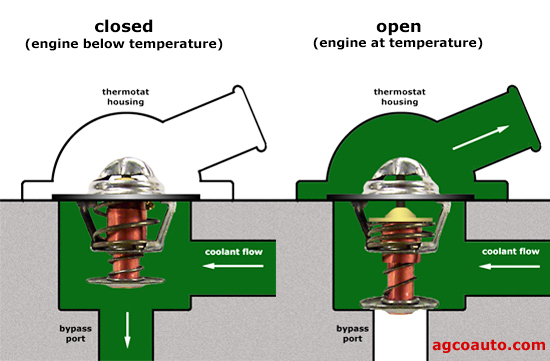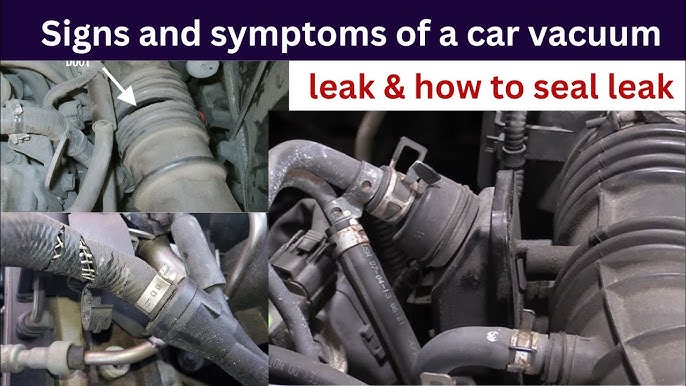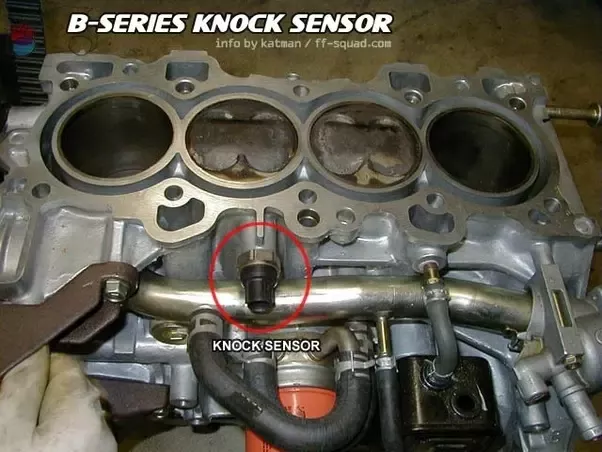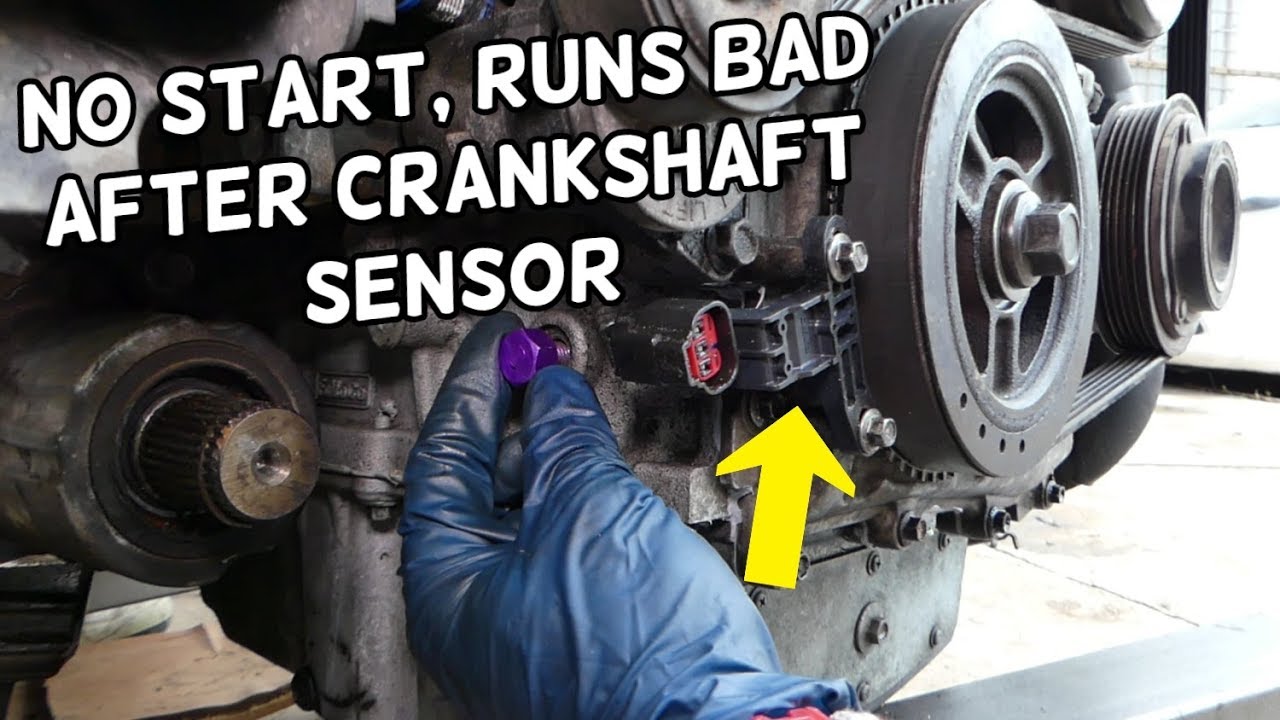Thermostat Stuck Closed Quick Fix
A quick fix for a thermostat stuck closed is to replace the thermostat. Ensure the engine is cool before attempting any repairs.
Experiencing overheating in your vehicle can be alarming, and a common culprit is often a thermostat stuck in the closed position. This malfunction prevents coolant from circulating through your engine, leading to potential overheating. To address this issue promptly, you’ll need the right tools and guidance to either temporarily alleviate the problem or undertake a full replacement.
This introduction aims to lead you through the steps of identifying and rectifying a closed thermostat, ensuring your vehicle returns to optimal running condition. Understanding the importance of a functioning cooling system is crucial for any car owner, and taking quick action can prevent more extensive engine damage. Let’s explore the methods to fix a closed thermostat, keeping your engine cool and reliable on the road.

Credit: www.youtube.com
Signs Of A Stuck Thermostat
Understanding the signs of a stuck thermostat is crucial for your vehicle’s health. A thermostat that remains closed can lead to overheating. Recognize these symptoms early to avoid engine damage. Here are the key indicators.
Rising Engine Temperature
An immediate rise in engine temperature often signals a stuck thermostat. The temperature gauge on your dashboard might move towards ‘hot’ faster than usual. This happens because the thermostat isn’t allowing coolant to flow through the engine.
Heater Malfunction
If you find the heater in your car is not working as it should, it might be due to a thermostat problem. The lack of warm air coming from the heater vents is a clear sign. It means the coolant is not reaching the heater core.
- Check engine temperature regularly.
- Note heater efficiency.
- Watch for temperature gauge spikes.
Stay alert to these signs to prevent serious engine issues. A regular check-up will help catch a stuck thermostat in time.

Credit: www.agcoauto.com
Immediate Actions To Mitigate Overheating
Thermostat stuck closed can lead to your vehicle overheating. When this happens, immediate action is crucial to prevent engine damage. In this section, we discuss the vital steps to take the moment you notice your car overheating.
Turn Off Your Vehicle
At the first sign of overheating, turn off your car. Continuing to drive can cause irreparable damage. Your best course of action is to find a safe spot, turn off the engine, and switch on your hazard lights.
Allow Engine To Cool
Wait for the engine to cool down before you attempt any further steps. Do not try to open the hood immediately as the built-up steam and heat can cause burns. Typically, a cooling period of at least 30 minutes is recommended.
- Check the coolant reservoir: Once the engine is cool, locate the coolant reservoir. Visually inspect for any leaks or damages.
- Inspect the radiator hoses: Look for any signs of wear or breakage in the hoses, as these could lead to coolant loss and overheating.
- Open the radiator cap: Use a cloth to protect your hand. If the coolant level is low, top it up.
Note: Always use coolant recommended by your vehicle manufacturer. Do not fill the radiator when the engine is hot.
Assessing Your Thermostat’s Condition
When a thermostat gets stuck closed, it can cause overheating. A quick fix begins with checking the thermostat. Knowing whether it’s faulty or functioning well is crucial. Here are simple ways to assess your thermostat’s condition.
Visual Inspection Tips
Your thermostat demands a keen eye. Begin by locating it. Check the housing for rust or damage. Inspect for leaks around it. Look for mineral deposits which suggest wear or age.
- Housing condition: Ensure it’s intact and undamaged.
- Seals and Gaskets: Look for any signs of leaks or brittleness.
Testing Thermostat Operation
Testing is straightforward. Remove the thermostat from the engine. Heat water and place the thermostat in. Observe whether it opens. Use a thermometer to check. It should open at the right temperature.
| Step | Action | Expected Outcome |
|---|---|---|
| 1 | Heat water in a pan | Simulates engine’s warmth |
| 2 | Submerge thermostat | Thermostat should begin to open |
| 3 | Use a thermometer | Verify opening temperature |
If it doesn’t open, a replacement is needed. A thermostat that opens too early or too late also needs replacing. This ensures optimal engine temperature.
Temporary Fixes On The Road
Imagine you are driving and your thermostat fails, stuck in the closed position. Your engine overheats, but you’re far from a mechanic. Don’t panic! Here are some quick fixes to help you safely reach your destination.
Bypassing The Thermostat
To bypass a stuck thermostat, find a safe place to pull over. Let your engine cool down. Locate the thermostat housing near the engine block. Carefully remove it. Now, take out the thermostat. This is a temporary solution. The engine will no longer overheat due to a closed thermostat. But remember, your engine might not reach its optimal operating temperature. This can affect engine performance. Drive to the nearest mechanic for a permanent fix.
Adjusting The Heating System
There’s another trick to lower engine temperature. Turn on the heater to full blast. This diverts heat away from the engine. Yes, it might get uncomfortable inside the car. But it helps to reduce the engine heat. Keep an eye on the temperature gauge. Ensure it doesn’t climb too high. Once the gauge stabilizes, drive carefully to a professional.
Long-term Solutions And Replacement
A thermostat stuck closed is more than a minor inconvenience. It signifies an urgent need for long-term solutions. Quick fixes may alleviate the issue temporarily, but they do not address the root cause. Replacing a faulty thermostat ensures your vehicle maintains its optimal temperature, safeguarding your engine’s health. Let’s explore the best course of action for selecting and replacing your thermostat.
Selecting The Right Thermostat
Choosing the correct thermostat is vital to your vehicle’s performance. Here are key points to consider:
- Check compatibility with your car model.
- Opt for quality brands known for durability.
- Ensure the temperature rating matches manufacturer specifications.
Step-by-step Replacement Guide
Replacing a thermostat is a straightforward process. Here’s how to do it:
- Prepare your car: Ensure the engine is cool and disconnect the battery.
- Drain the coolant: Remove the radiator cap and open the drain valve.
- Remove the housing: Unbolt the thermostat housing from the engine.
- Extract the old thermostat and clean the mounting surface.
- Install the new thermostat, ensuring correct orientation.
- Reassemble the housing and re-tighten the bolts.
- Refill with coolant and reconnect the battery.
- Test your car: Start the engine to check for leaks.
Note: Refer to your vehicle’s manual for specific guidance.
| Step | Action | Tools Needed |
|---|---|---|
| 1 | Disconnect Battery | Wrench |
| 2 | Drain Coolant | Drain Pan |
| 3 | Remove Housing | Ratchet Set |
Credit: www.quora.com
Preventive Measures For Future Issues
Preventing a thermostat from getting stuck closed requires attention to your vehicle’s maintenance. Proper care not only enhances performance but also saves on costly repairs down the road. Follow these steps to keep your vehicle’s thermostat working smoothly.
Regular Maintenance Schedule
Sticking to a set maintenance plan helps catch issues before they become major. Here’s a checklist to consider:
- Read the vehicle’s manual for recommended service intervals.
- Replace the coolant at suggested times.
- Check hoses and connections for signs of wear regularly.
- Inspect the thermostat periodically for proper operation.
A well-maintained cooling system keeps your engine at the right temperature. This routine saves time and money, avoiding frustrating breakdowns.
Monitoring Vehicle Temperature
Keep an eye on the temperature gauge on your dashboard. It’s a direct link to your vehicle’s health. Should it read higher than usual, take proactive steps:
- Pull over in a safe location to prevent engine damage.
- Allow the engine to cool before attempting any inspection.
- Consult with a professional mechanic to diagnose the issue.
Monitoring temperature ensures early detection of a failing thermostat. Immediate action can spare you the headache of bigger repairs.
By implementing these preventive strategies, your thermostat should remain functional, your vehicle healthy, and your journeys smooth. Regular check-ups and staying alert to your vehicle’s cues are fundamental to a hassle-free driving experience.
Frequently Asked Questions Of Thermostat Stuck Closed Quick Fix
Can A Stuck Thermostat Cause Overheating?
Yes, a stuck thermostat can cause overheating. It prevents coolant from circulating through the engine, causing the temperature to rise. This can lead to engine damage if not fixed promptly.
How To Diagnose A Closed Thermostat Problem?
To diagnose a closed thermostat, check for high engine temperatures or insufficient heating inside the car. Another sign is coolant not flowing through the radiator. Using a thermometer, test the coolant temperature for irregularities.
What Tools Are Needed For A Quick Thermostat Fix?
Basic tools needed include a screwdriver, pliers, and a wrench. To replace the thermostat, you’ll also need a new gasket and possibly coolant to refill the system.
Will A Coolant Flush Solve A Stuck Thermostat?
A coolant flush won’t fix a stuck thermostat. It’s a separate issue. A flush cleans the system, while a stuck thermostat needs mechanical repair or replacement.
Conclusion
Facing a thermostat that’s stuck closed can be frustrating. Ensuring a quick, effective fix is key to your vehicle’s health. Remember, addressing the issue promptly avoids further complications. For those DIY moments, our tips provide a helpful starting point. Stay informed, stay prepared, and keep that thermostat functioning smoothly!




